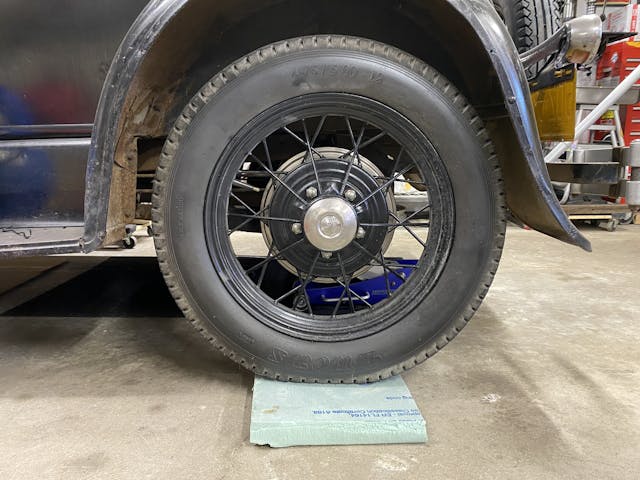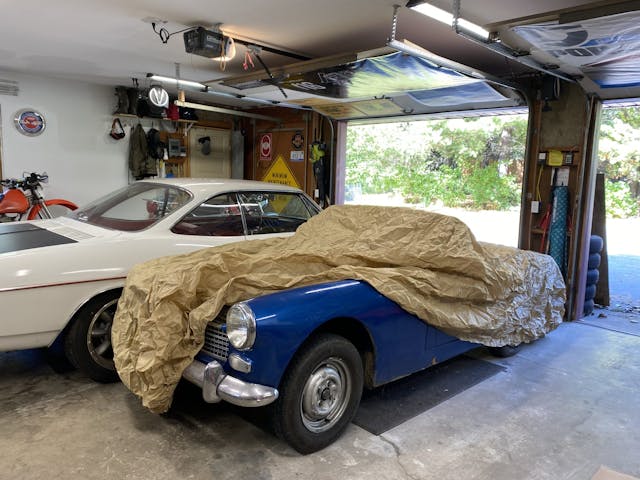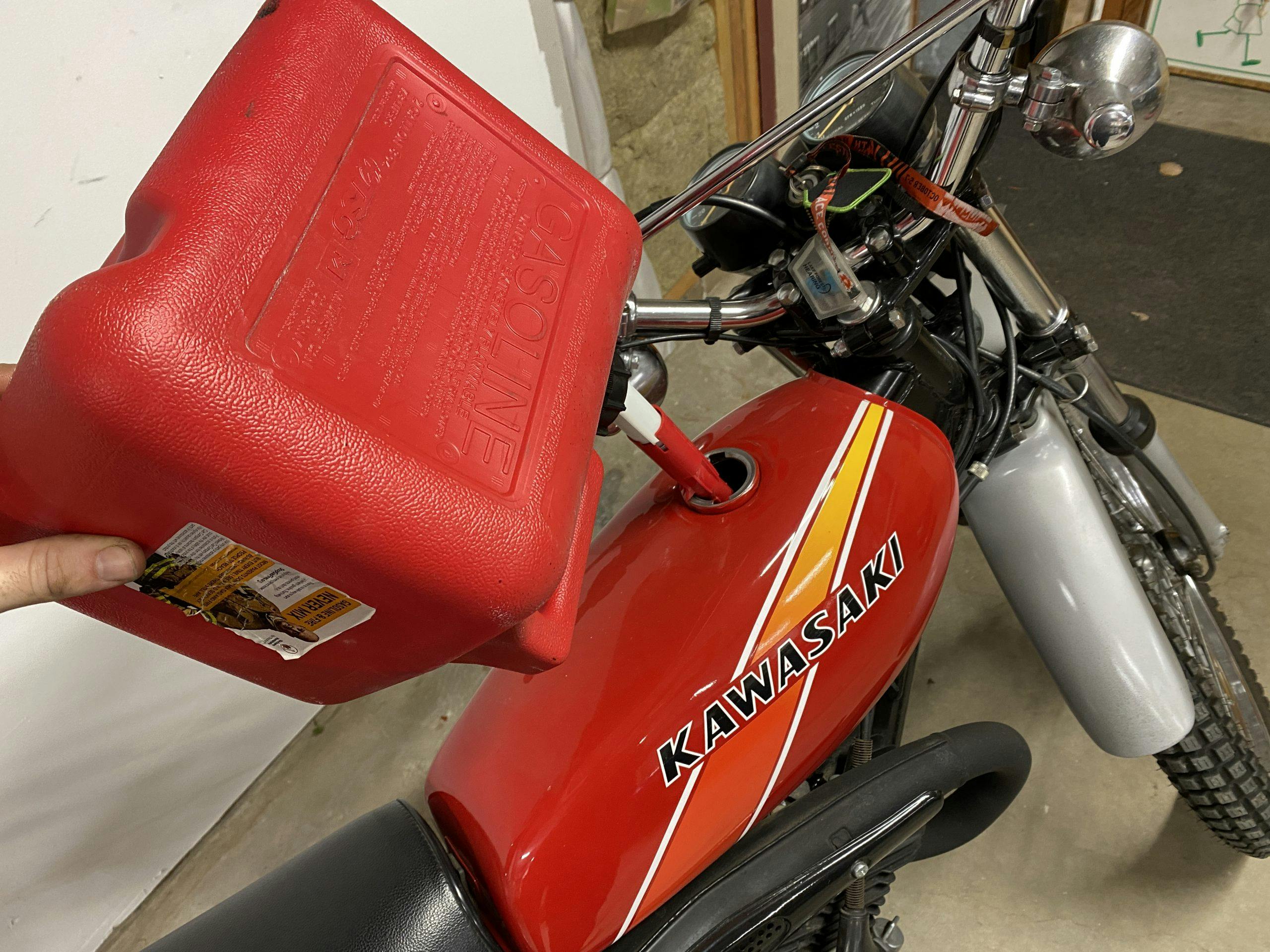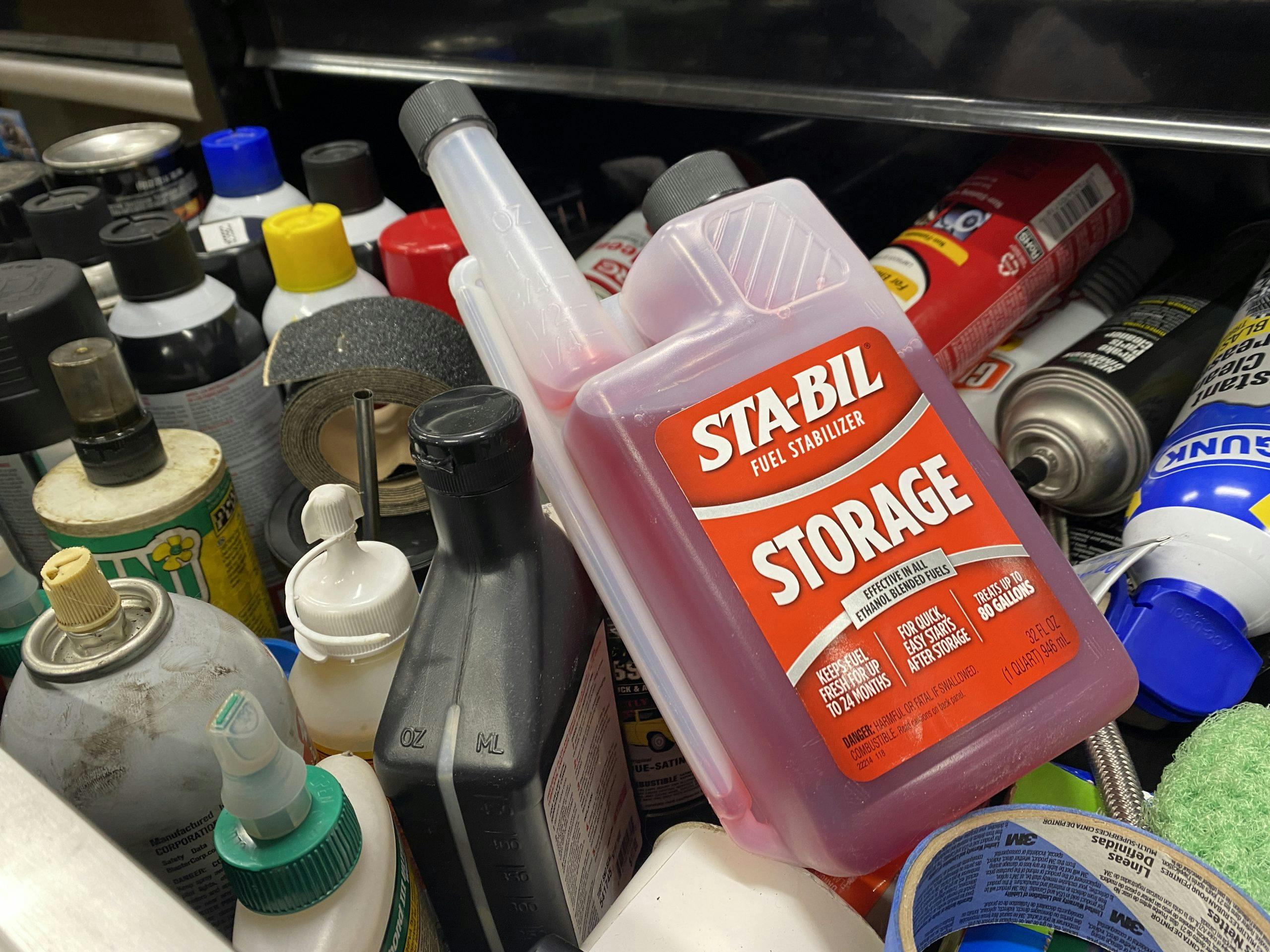4 critical steps for winter storage prep
Whether we like it or not, the changing of the seasons is upon us, and that means some of us are mentally preparing for the saddest day of the year—when we tuck our vintage toys into seasonal storage. It can be a rough day for a bunch of reasons, but a little stress and care right now can make for an extra delightful spring when you take your car out for that first drive.
Top up (two ways)
Storing with non-ethanol fuel is best, but not everyone has access to it, or it may come at enough of a premium that it’s not in the cards right now. Regardless of fuel type, fill the tank to the top and add an appropriate fuel stabilizer. Most vintage fuel tanks are steel and thus are very susceptible to rust, which can flake off and fill your fuel system with debris. Holy headache. With the tank topped off, there is no room for air and thus rust is kept at bay. Once you have some stabilizer in the tank, be sure to run the car for 10-15 minutes to make sure that it circulates through the entire fuel system.
The other “top” to think about is the convertible top. While you might never put the top for the summer, it is in your best interest to store a car with the top up so that it does not shrink or otherwise get damaged from long-term storage while being folded up. This is especially important for plastic rear windows that will lock into a shape when held in a particular way for too long. Replacing tops is not fun, and you aren’t driving anyway, so why not use it as the time to get your top back into shape?
Insulate your tires

Tires are made for driving, not for parking. That’s why long-term storage is likely to cause flat spots or dry-rotting of the rubber rings we need so dearly. There are appropriate products on the market that can help, but it’s also just as easy to pick up some insulation foam board and cut a few squares that fit under your tires. This will form a cradle for the tire and also keep the dirt or concrete under the car from sucking the moisture out of the rubber, making them last longer. If you want to go an extra step in moisture management, lay down a tarp or painter’s plastic sheet under the car to prevent the cool chassis from condensing any moisture that might rise up from the ground.
Cover up

If your storage spot has windows or is open on one side, be sure to utilize a good quality car cover. UV degradation can happen fast when a car is parked in one spot and the sunlight only hits a specific spot day after day. Your seats, paint, and trim will thank you for covering up, as it will also keep scratches and dust off your precious vintage ride. Speaking of dust, be sure that the car is clean before you cover it. Really clean. A cover can grind any dirt and debris left on the car into your delicate paint. Also, remember that covers don’t do much to protect from dents, so make sure your car does not become a shelf or leaning place for other things in the garage.
Fresh fluids

At a minimum, your car should get fresh oil and a coolant check. Oil traps combustion byproducts, and if left in the crankcase to sit all winter you can end up with corrosion or deposits that require serious work to remove. An oil change right before storage is cheap insurance. Coolant needs to be properly mixed for the temperatures the car will see in storage so it doesn’t freeze. Freezing liquids can exert tons of force—enough to literally split your engine block in two. You can be sure with a simple $3 tester, or if you’re really unsure and the coolant looks or smells dirty, a flush and fill could be your best option.
While under the hood looking at fluids, take a moment to inspect your brake fluid, as it can absorb moisture too. Flush with fresh fluid if the reservoir is anything but a nice light amber color.
Good luck. Spring will be here before you know it. (We hope.)





Everything I’ve read about electronic sonic devices say they don’t work. I had a half dozen suspended over a car in storage and a mouse got in and peed and pooped all over passenger air filter and it took a couple of years to get rid of smell, and I used an ozone generator with no success. Tried moth balls in car following winter and odor still present a couple of years later, carcinogenic by the way. Now I place one moth ball on top of each tire and another one in engine compartment. I also place a nite light under the car and a second one in engine compartment. So far, so good.